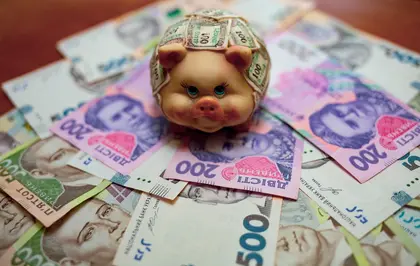Last week, the Ukrainian Central bank was forced to devalue the Ukrainian Hryvnia 25% to a rate of $1 USD = 36.5 UAH. However, within days, currency exchange signs were seen around Kyiv advertising rates of $1 = 39.25.
Tymofiy Mylovanov, the former Minister of Minister of Economics, commented on the Central Bank’s decision by saying that he did not foresee the Ukrainian Hryvnia being able to return to its pre-war levels of being less than 29 to the Dollar.
JOIN US ON TELEGRAM
Follow our coverage of the war on the @Kyivpost_official.
USAID had earlier estimated that the war was costing Ukraine nearly $5-7 Billion a month. In the month of May, it was estimated that additional military costs were nearly $3.3 billion. With plans to now further build-up the Ukrainian military to the size of one million soldiers, costs will further increase. The cost of defending over 1,000 KM of front in the war, expanding from the seafront in the south, to where most of the active fighting is taking place in the east, all along the northern border with Russia and Belarus, continuing alone the West near Transnistria, occupied Moldova, is an expense that has drained Ukrainian Government coffers.
Despite roughly $38bn of budgetary support being promised to Ukraine by the international community, less than $13 billion had arrived to Kyiv as of the beginning of this month. The European Union, which had promised 9 billion Euros, is expected later this month to send only 1 billion Euros of assistance due to bureaucratic hold-ups in Germany.
Even with this additional financial aid from Europe, economists warn that this will not be enough to get Kyiv back into the black.
Moody’s, the international credit rating agency, has revised its predictions for Ukraine and now believes that there will be a government budget deficit of nearly $5 billion a month which will amount to a total deficit of $50B for this year, equating to 22% of GDP.
The solutions are not easy as economists have warned that Ukraine must be careful in its monetary policy, lest it turn to printing Hryvnia to get out of debt – something that would trigger inflation.
Current inflation has caused prices to be driven up across Ukraine, during a time where many citizens find themselves without employment and struggling to make ends-meet.
Looking ahead, economists are concerned that maintaining basic government services, such as hospitals and pensions, will become challenging as Kyiv seeks means to cover the massive additional costs of war.
Throughout this turmoil, economists have routinely noted that Ukraine alone cannot pull itself out of this and will need substantial Western assistance to survive its current economic peril.
However, increasingly economists, public leaders, and governments are looking to use some of the billions of dollars frozen from Russia’s national reserves that were kept overseas.
Based upon publicly available data of the Russian Government, as of January 1, the Russian Central Bank was keeping nearly $316 billion in reserves in foreign countries, including in US, Japan, Germany, France, Canada, the UK, and others. Should those monies be nationalized and turned over to Ukraine, it would rapidly change the economic situation in Kyiv and would likely change the course of the war.
Some have written, as Anders Aslund wrote for the Kyiv Post, that Ukraine must make the seizure of the Russian assets a top priority. Aslund went on to say that the “Ukrainian government should make it a diplomatic top priority to convince its Western partners to confiscate the international currency reserves of the Central Bank of Russia and deploy them to Ukraine as Russian war reparations.”
With few options left on the table for Ukraine to be able to pay its bills, the possibility of the formerly-Russian reserves being channelled to Ukraine, increases.
You can also highlight the text and press Ctrl + Enter



